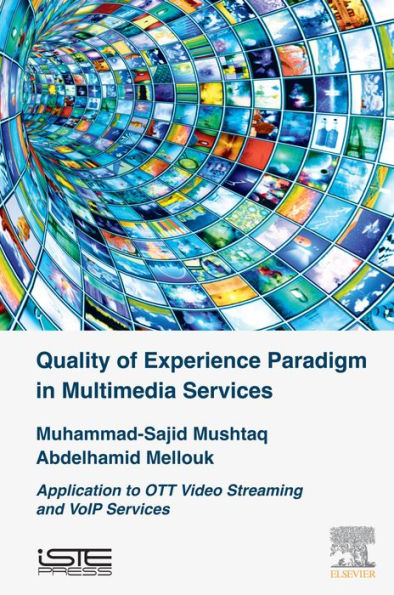Quality of Experience Paradigm in Multimedia Services: Application to OTT Video Streaming and VoIP Services
The analysis of QoE is not an easy task, especially for multimedia services, because all the factors (technical and non-technical) that directly or indirectly influence the user-perceived quality have to be considered. This book describes different methods to investigate users' QoE from the viewpoint of technical and non-technical parameters using multimedia services. It discusses the subjective methods for both controlled and uncontrolled environments. Collected datasets are used to analyze users' profiles, which sheds light on key factors to help network service providers understand end-users' behavior and expectations. Important adaptive video streaming technologies are discussed that run on unmanaged networks to achieve certain QoS features. The authors present a scheduling method to allocate resources to the end-user based on users' QoE and optimizes the power efficiency of users' device for LTE-A. Lastly, two key aspects of 5G networks are presented: QoE using multimedia services (VoIP and video), and power-saving model for mobile device and virtual base station. - Features two proven methods to collect datasets for assessing the user's QoE - Investigates client-based HTTP rate adaptive video streaming algorithms over TCP protocol to regulate the user's QoE - Discusses VoIP service and focuses on a QoE driven downlink scheduling method for LTE-A technology - Introduces the concept of 'quality of experience' presenting all parameters which directly or indirectly influence the user's satisfaction within two well-used Internet services, multimedia OTT streaming and Voice over IP
1132568535
Quality of Experience Paradigm in Multimedia Services: Application to OTT Video Streaming and VoIP Services
The analysis of QoE is not an easy task, especially for multimedia services, because all the factors (technical and non-technical) that directly or indirectly influence the user-perceived quality have to be considered. This book describes different methods to investigate users' QoE from the viewpoint of technical and non-technical parameters using multimedia services. It discusses the subjective methods for both controlled and uncontrolled environments. Collected datasets are used to analyze users' profiles, which sheds light on key factors to help network service providers understand end-users' behavior and expectations. Important adaptive video streaming technologies are discussed that run on unmanaged networks to achieve certain QoS features. The authors present a scheduling method to allocate resources to the end-user based on users' QoE and optimizes the power efficiency of users' device for LTE-A. Lastly, two key aspects of 5G networks are presented: QoE using multimedia services (VoIP and video), and power-saving model for mobile device and virtual base station. - Features two proven methods to collect datasets for assessing the user's QoE - Investigates client-based HTTP rate adaptive video streaming algorithms over TCP protocol to regulate the user's QoE - Discusses VoIP service and focuses on a QoE driven downlink scheduling method for LTE-A technology - Introduces the concept of 'quality of experience' presenting all parameters which directly or indirectly influence the user's satisfaction within two well-used Internet services, multimedia OTT streaming and Voice over IP
100.0
In Stock
5
1

Quality of Experience Paradigm in Multimedia Services: Application to OTT Video Streaming and VoIP Services
200
Quality of Experience Paradigm in Multimedia Services: Application to OTT Video Streaming and VoIP Services
200
100.0
In Stock

Product Details
| ISBN-13: | 9780081011737 |
|---|---|
| Publisher: | ISTE Press - Elsevier |
| Publication date: | 11/20/2017 |
| Sold by: | Barnes & Noble |
| Format: | eBook |
| Pages: | 200 |
| File size: | 14 MB |
| Note: | This product may take a few minutes to download. |
About the Author
What People are Saying About This
From the B&N Reads Blog
